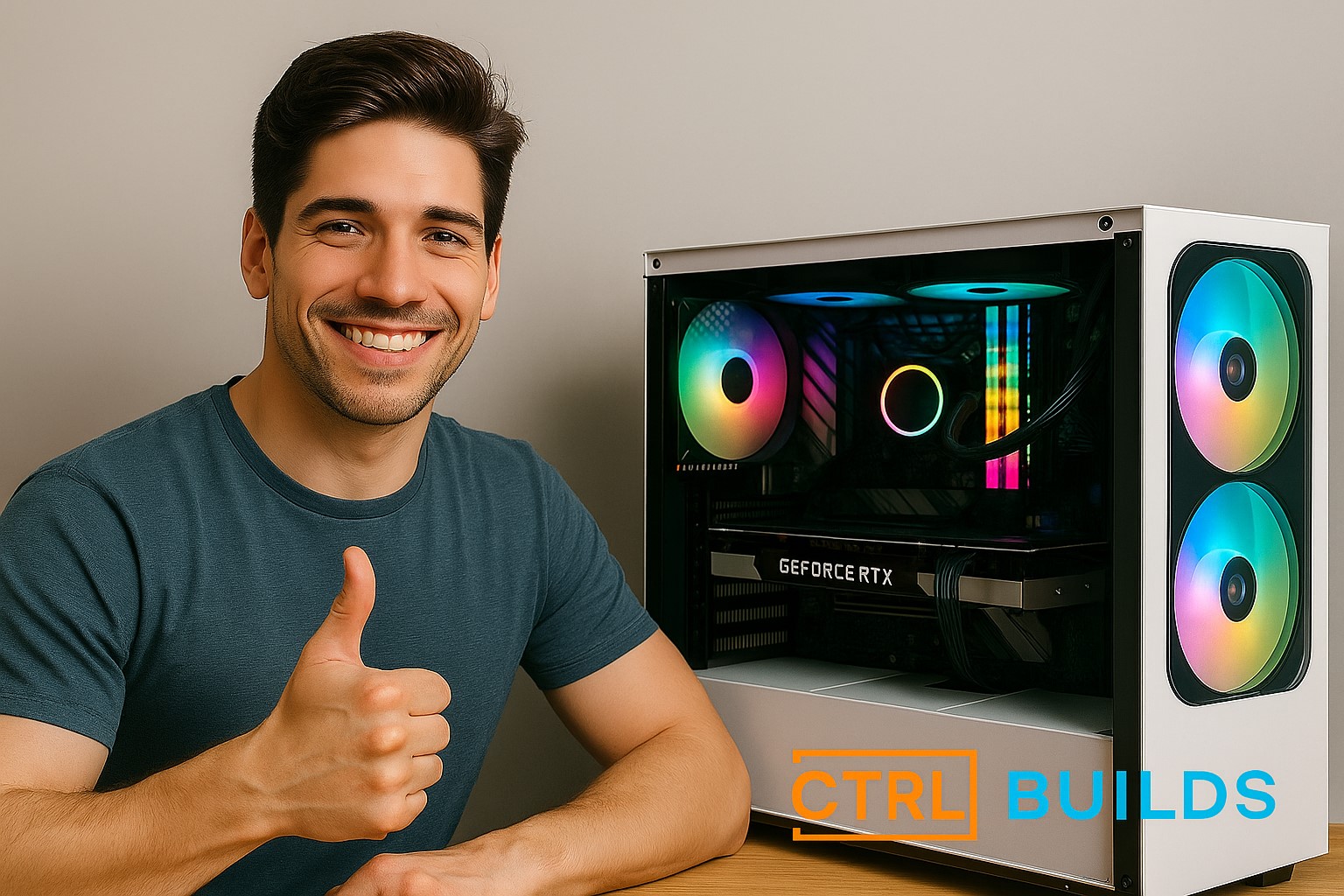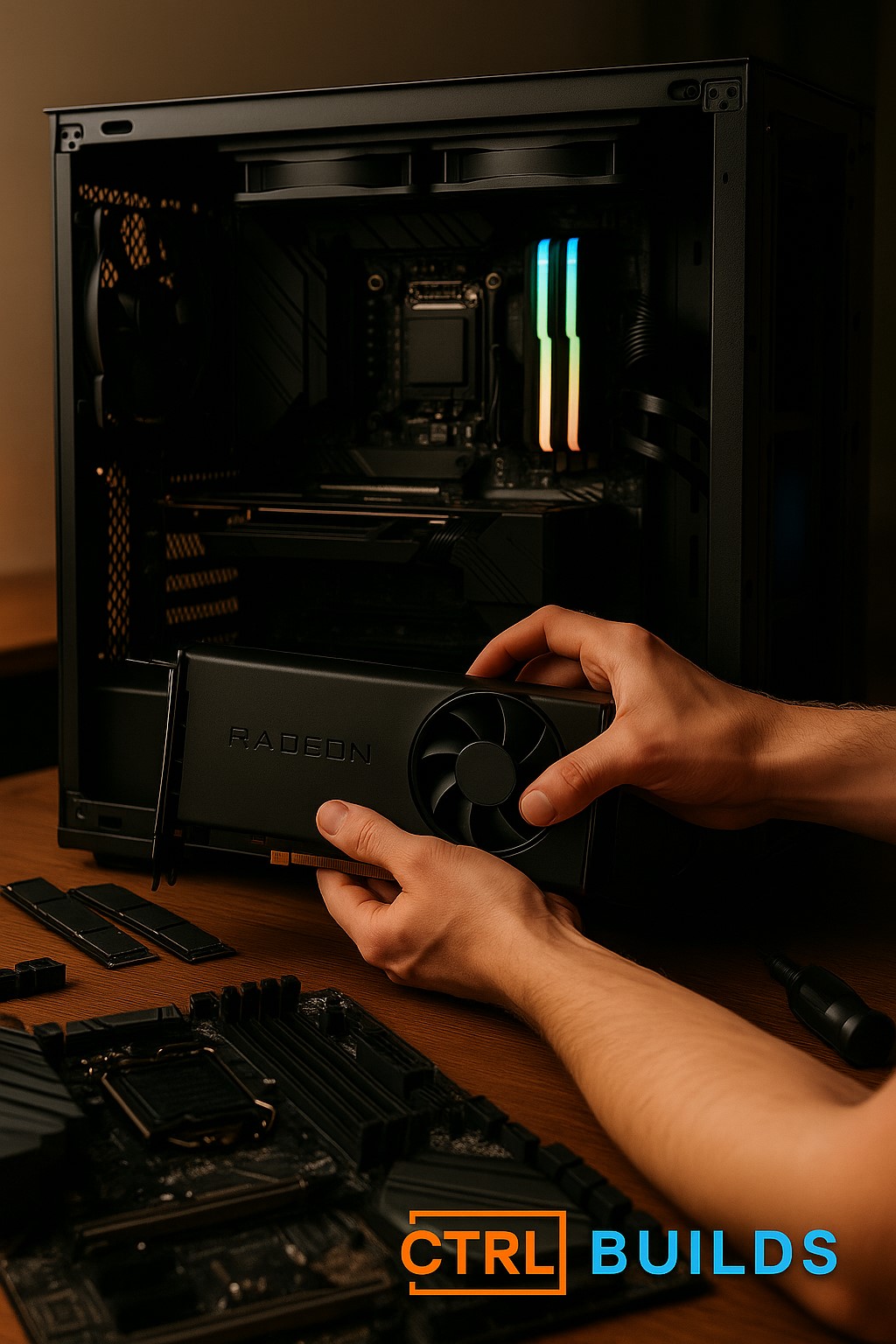Welcome to CTRL Builds — where sharp thinking meets smarter hardware decisions.
You're here because you're asking the right question at the right time: is now the moment to commit to a new PC build, or are there better days on the horizon? In 2025, the tech landscape has shifted — but not always in ways you'd expect.
Building a PC in 2025 isn’t the same as it was a few years ago. Gone are the days of overpriced graphics cards, global chip shortages, and staring at “out of stock” notices for months on end. But even now — with hardware finally settling down — the big question remains: is this the right time to build?
If you’re sitting on an old setup that’s wheezing through Warzone or freezing mid-lecture while you multitask Chrome tabs, you’ve probably considered hitting the power button on a brand-new custom build. And fair enough — there's a lot to tempt you. New graphics cards. Faster memory. Sleeker cases. Better cooling. But timing still matters.
In this post, we’ll break down exactly what’s changed in the PC market this year — and help you decide whether to buy now or wait a little longer. We’re not here to oversell or sugar-coat. This is a straight look at the real state of PC building in the UK, mid-2025.
Where GPUs Stand in 2025
If you tried to build a PC during the GPU crisis a few years back, you probably still get flashbacks of eBay scalpers and insane prices for ageing cards. Thankfully, we’re out of that storm now. In 2025, the GPU market has mostly stabilised — but “better” doesn’t mean “perfect.”
NVIDIA’s RTX 40 Super cards are everywhere, but they’re still priced with that signature NVIDIA confidence. The RTX 4070 Super, for example, delivers great performance for 1440p gaming, but it’s hard to justify when AMD’s 6950 XT or the newer 7900 GRE can often be found for hundreds less and perform just as well — if not better — in real-world games.
🔴 AMD Radeon RX 6950 XT
- Performance: High-end 1440p / entry 4K
- Avg UK Price: £420–£460
- More VRAM (16GB)
- Better value per £
🟩 NVIDIA RTX 4070 Super
- Performance: Excellent 1440p / DLSS 4K
- Avg UK Price: £560–£600
- DLSS 3 & Frame Generation
- Better ray tracing support
If you’re budget-conscious, AMD’s current-gen cards are punching hard. The RX 7800 XT is an especially solid choice for high frame rate 1080p and smooth 1440p play. Meanwhile, Intel’s ARC lineup is still kicking around, but driver support is hit or miss — probably not worth banking your build on unless you’re just web browsing or tinkering.
The big win here is that you’ve actually got options again. Whether you’re going mid-tier or aiming for high-end, cards are in stock, prices are semi-reasonable, and performance-per-pound is finally a real metric again.
Choosing a CPU in 2025 — Intel, AMD or Wait?
The CPU space has levelled out too — but not in the way people expected. Intel’s 14th-gen chips dropped with strong performance, but let’s be honest: they’re mostly refined versions of 13th-gen. If you're eyeing something like the i5-14400F or i7-14700K, you're getting solid gaming and multi-core performance without spending silly money. These chips still run hot, mind you, so make sure your cooling and airflow are sorted properly.
On the AMD side, the new Ryzen 8000 series (Zen 5) is looking sharp. Excellent power efficiency, lower thermals, and great multi-threaded performance make them a real contender — especially if you’re building a compact or quiet system. The Ryzen 7 8700X in particular hits a sweet spot for gamers who stream or multitask. If you're not fussed about onboard graphics, the non-G variants are usually better value.
And what about future-proofing? Right now, AMD’s AM5 platform has a longer runway than Intel’s current LGA1700. That could matter if you plan on upgrading again without swapping your entire board. DDR5 is standard across both platforms now, and prices have dropped massively — so no real advantage either way there.
🔵 Intel i5-14400F
- 10-core hybrid (6P + 4E)
- Strong single-core gaming
- Runs hot under load
- Avg UK Price: £180–£200
🔴 Ryzen 7 8700X
- 8-core Zen 5 architecture
- Efficient + lower thermals
- Ideal for streaming & multitasking
- Avg UK Price: £290–£310
Bottom line: both Intel and AMD are in a good place. If you want max performance and don’t mind the heat, go Intel. If you value efficiency and plan to upgrade over time, AMD’s probably your best bet. Either way, you’ve got strong choices — and that’s a win for UK builders after years of frustration.
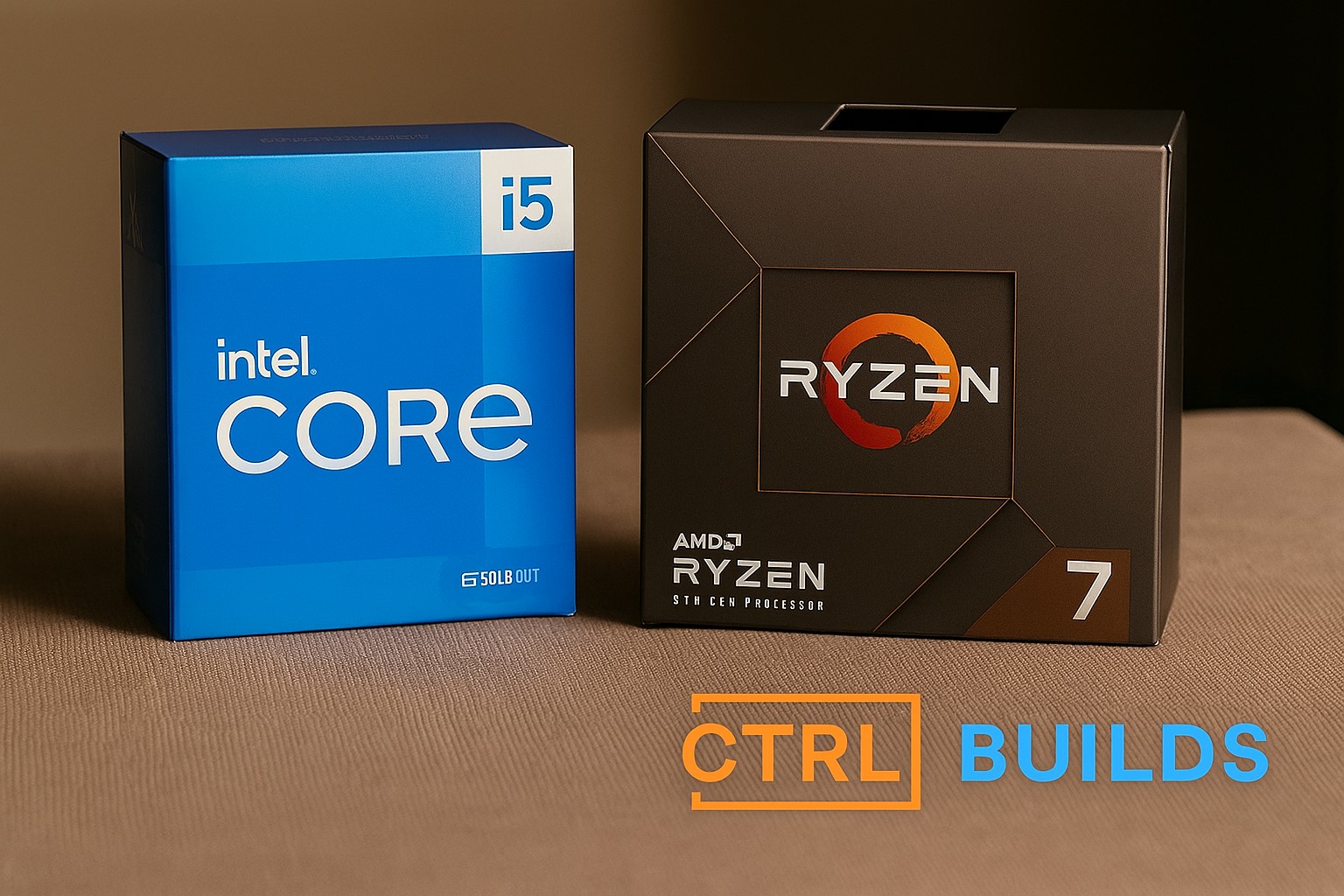
Intel Core i5-14400F and AMD Ryzen 7 8700X — real performance, real options.
What About RAM, Storage and Motherboards?
It used to be that 16GB of RAM was the go-to — enough for gaming, browsing, and even a bit of content creation. But in 2025? The game’s moved on. With heavier games, background apps, Discord, streaming, and AI tools all running at once, 32GB is quickly becoming the new standard. And the good news? DDR5 has dropped massively in price.
🔵 RAM — DDR5 Is Now Standard
- 32GB DDR5 kits now under £100
- Faster, more efficient than DDR4
- No need to hold onto outdated RAM unless reusing a board
You can now pick up a solid 32GB DDR5 kit for under £100, and with most modern motherboards supporting it out of the box, there's really no reason to cling to DDR4 unless you're reusing an older build. It’s faster, more efficient, and it future-proofs your rig without much extra spend.
🟩 Storage — PCIe Gen 4 Hits the Sweet Spot
- Gen 4 NVMe = best balance of price and performance
- Gen 5 is overkill for most users
- 1TB/2TB Crucial P5 Plus or WD SN850X = top choices
For storage, PCIe Gen 4 NVMe drives are now the sweet spot. Gen 5 sounds great on paper, but most people won’t see the difference in day-to-day use — and the cost is still disproportionately high. A 1TB or 2TB Gen 4 NVMe like the Crucial P5 Plus or WD SN850X offers lightning-fast boot times and game loads without melting your wallet.
🟠 Motherboards — B-Series or Z/X?
- AMD: B650 for value, X670 for expandability
- Intel: B760 for mainstream, Z790 for full control
- Stick with ASUS, MSI, Gigabyte for reliability
Just make sure you’re buying from a trusted UK supplier. There's still the odd listing out there with older firmware or mismatched CPU support. Stick with brands like ASUS, MSI, or Gigabyte and check compatibility before checkout. It’ll save you headaches later.
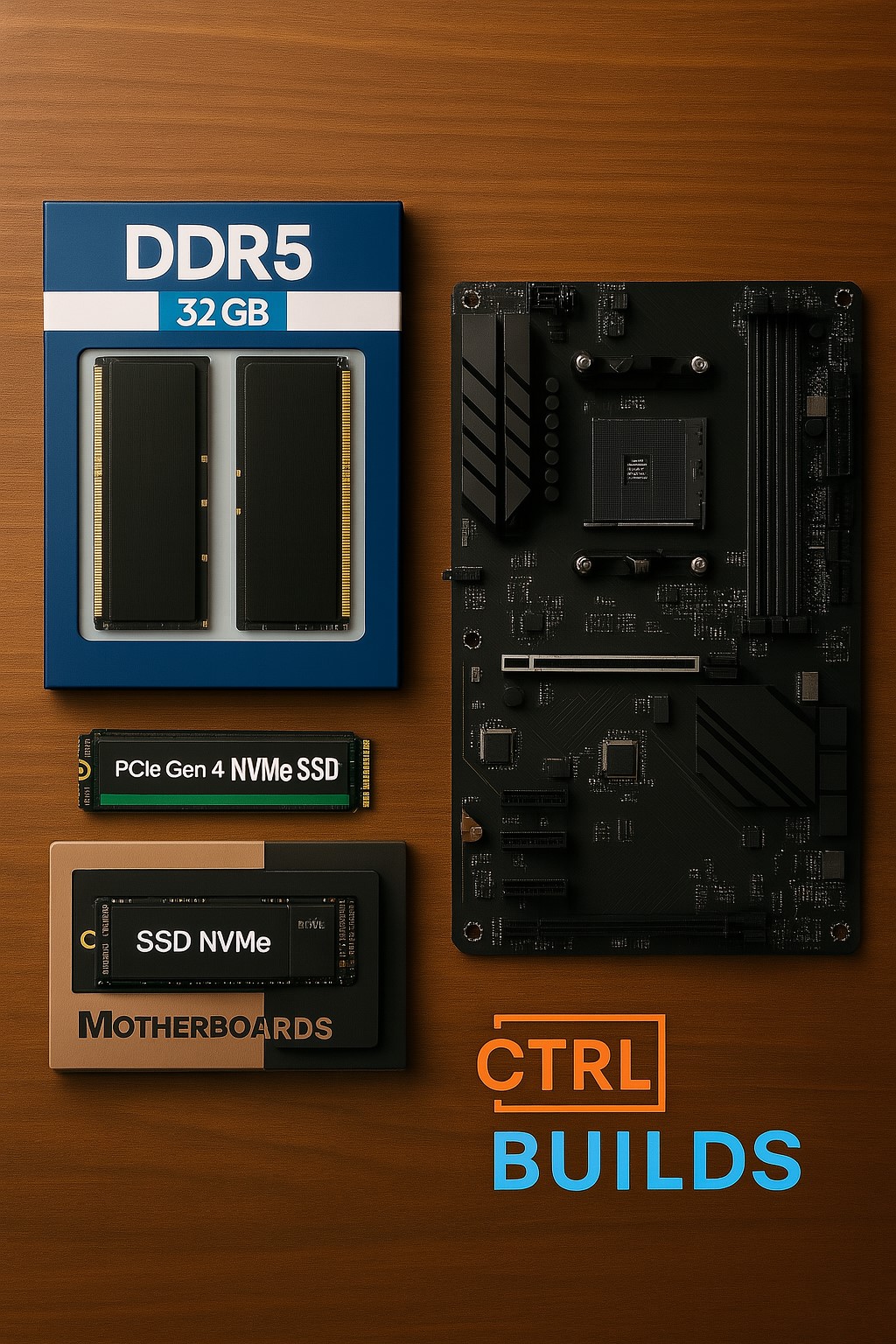
DDR5, PCIe Gen 4, and a modern motherboard — the 2025 build essentials.
Cooling & Case Choices — What Actually Makes Sense
Cooling is often treated like an afterthought, but if you're building in 2025, it deserves a proper look. CPU power levels are still high, especially if you're going for something like an i7-14700K or Ryzen 9, and that heat needs managing — not just for performance, but for long-term reliability.
The good news? You’ve got choices — and they all work well if you pair them properly:
🌀 Air Coolers
Great value, easy to install, and almost zero maintenance. A high-end unit like the Thermalright Peerless Assassin or Noctua NH-D15 can match many 240mm AIOs for raw cooling power. Just make sure your case can handle the height.
💧 AIO Liquid Coolers
Cleaner aesthetics, quieter under load, and better heat dissipation in tight builds. Most 240mm models strike the best balance between performance and cost. Look for units with quality pumps and solid mounting brackets — Arctic and Lian Li are favourites.
🌬️ Case Airflow
Arguably just as important as the cooler itself. A case with good front intake, mesh panels, and rear/top exhaust options can make or break your thermals. Don’t get lured in by cases that look great but suffocate your fans.
And don’t forget your PSU: With GPUs regularly pulling over 250W and CPUs spiking under load, a good quality PSU is essential. Look for an 80+ Gold rated unit from a trusted brand (Corsair, Seasonic, Be Quiet!, etc.), and make sure the wattage fits your full system — 650W is the safe minimum these days, with 750W+ recommended for higher-end builds or future upgrades. Also keep an eye out for ATX 3.0 compatibility if you're using a newer NVIDIA card with a 12VHPWR connector.
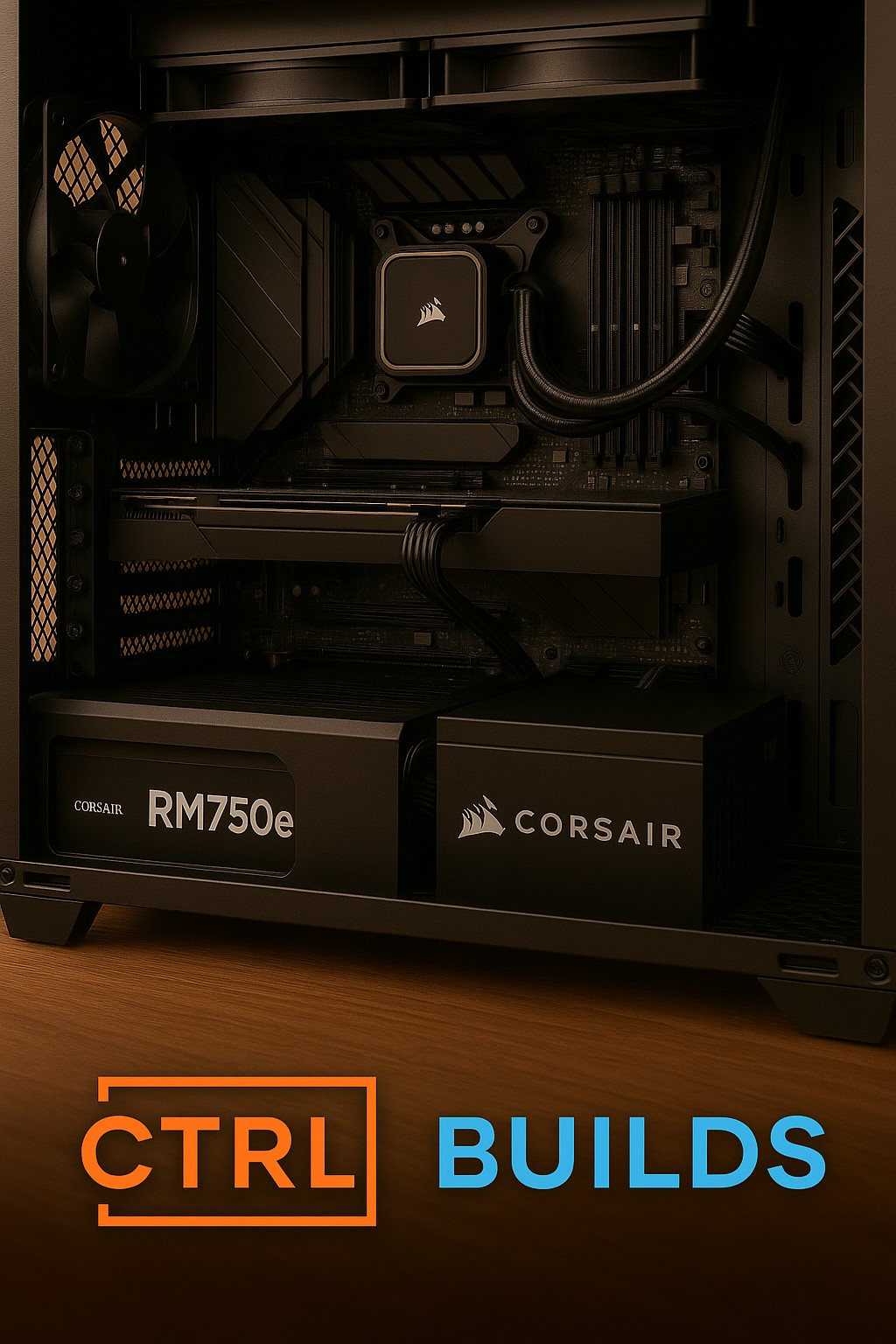
A well-balanced case setup with proper airflow, cooling, and PSU placement — the final touches that keep everything stable.
So, Should You Build a PC Right Now?
The PC component market in 2025 is the most balanced it’s been in years. Prices are fairer, stock is consistent, and performance gains from newer hardware are finally starting to feel worthwhile again.
If you’ve been putting off a build, there’s very little reason to keep waiting. GPUs like the RX 6950 XT or RTX 4070 Super are delivering strong results at more reasonable prices. CPUs are powerful and efficient, RAM is affordable, and even storage has caught up in speed without needing to spend silly money on the latest Gen 5 drives.
The only reason you might want to hold off is if you're eyeing the next big thing — like RTX 5000 series cards or newer CPU platforms from Intel or AMD expected later this year. But unless you're chasing absolute bleeding-edge specs, you're not missing out on much right now.
The bottom line? If you’re ready, build now. Just make smart part choices, don’t overpay for hype, and build something that actually fits your needs. This isn’t just about hardware — it’s about building right, not building twice.
Not just a build, a CTRL Build.
